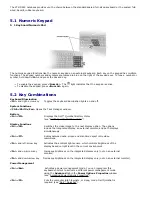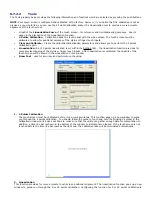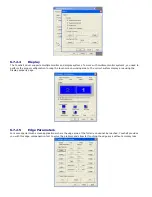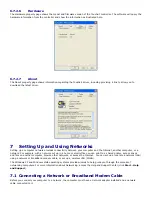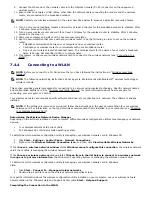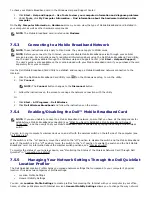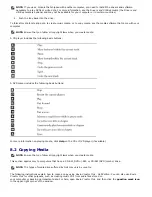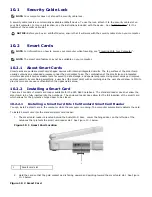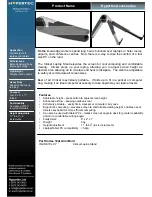
9.
Connect the other end of the network cable into the Internet network (RJ-45) connector on the unpowered
wireless router.
10.
Ensure that no network or USB cables, other than the network cable connecting the modem and the wireless
router, are connected to the broadband modem.
NOTE: Restart your wireless equipment in the order described below to prevent a potential connection failure.
11.
Turn on only your broadband modem and wait for at least 2 minutes for the broadband modem to stabilize. After
2 minutes, proceed to step 12.
12.
Turn on your wireless router and wait for at least 2 minutes for the wireless router to stabilize. After 2 minutes,
proceed to the step 13.
13.
Start your computer and wait until the boot process completes.
14.
See the documentation that came with your wireless router to do the following in order to set up the wireless
router:
·
Establish communication between your computer and your wireless router.
·
Configure your wireless router to communicate with your broadband router.
·
Find out your wireless router’s broadcast name. The technical term for the name of your router’s broadcast
name is Service Set Identifier (SSID) or network name.
15.
If necessary, configure your wireless network card to connect to the wireless network (see "
173H
Connecting to a
WLAN").
7.4.4
Connecting to a WLAN
NOTE: Before you connect to a WLAN, ensure that you have followed the instructions in "
174H
Wireless Local Area
Network".
NOTE: The following networking instructions do not apply to internal cards with Bluetooth
®
wireless technology or
cellular products.
This section provides general procedures for connecting to a network using wireless technology. Specific network names
and configuration details vary. See "
175H
Wireless Local Area Network" for more information about how to prepare for
connecting your computer to a WLAN.
Your wireless network card requires specific software and drivers for connecting to a network. The software is already
installed.
NOTE: If the software is removed or corrupted, follow the instructions in the user documentation for your wireless
network card. For information on the type of wireless network card that is installed in your computer, see "
176H
Checking
Your Wireless Network Card".
Determining the Wireless Network Device Manager
Depending on the software installed on your computer, different wireless configuration utilities may manage your network
devices:
·
Your wireless network card’s client utility
·
The Windows XP or Windows Vista operating system
To determine which wireless configuration utility is managing your wireless network card in Windows XP:
1.
Click Start
→
Settings
→
Control Panel
→
Network Connections.
2.
Right-click the Wireless Network Connection icon, and then click View Available Wireless Networks.
If the Choose a wireless network window states Windows cannot configure this connection, the wireless network
card’s client utility is managing the wireless network card.
If the Choose a wireless network window states Click an item in the list below to connect to a wireless network
in range or to get more information, the Windows XP operating system is managing the wireless network card.
To determine which wireless configuration utility is managing your wireless network card in Windows
Vista:
1.
Click Start
→
Connect To
→
Manage wireless networks.
2.
Double-click a profile to open the wireless network properties screen.
For specific information about the wireless configuration utility installed on your computer, see your wireless network
documentation in the Windows Help and Support Center (click Start
→
Help and Support).
Completing the Connection to the WLAN


